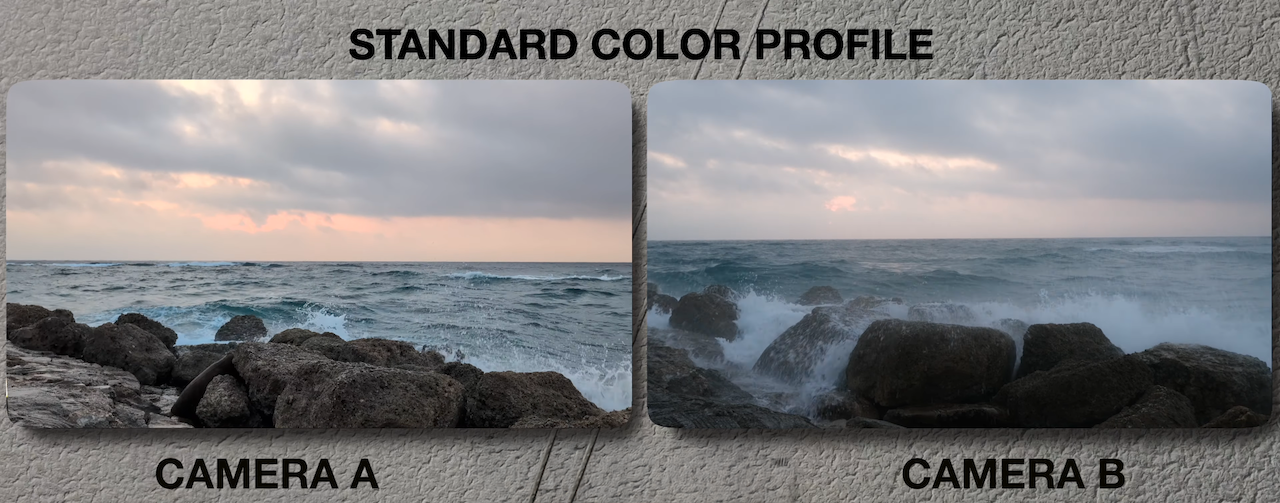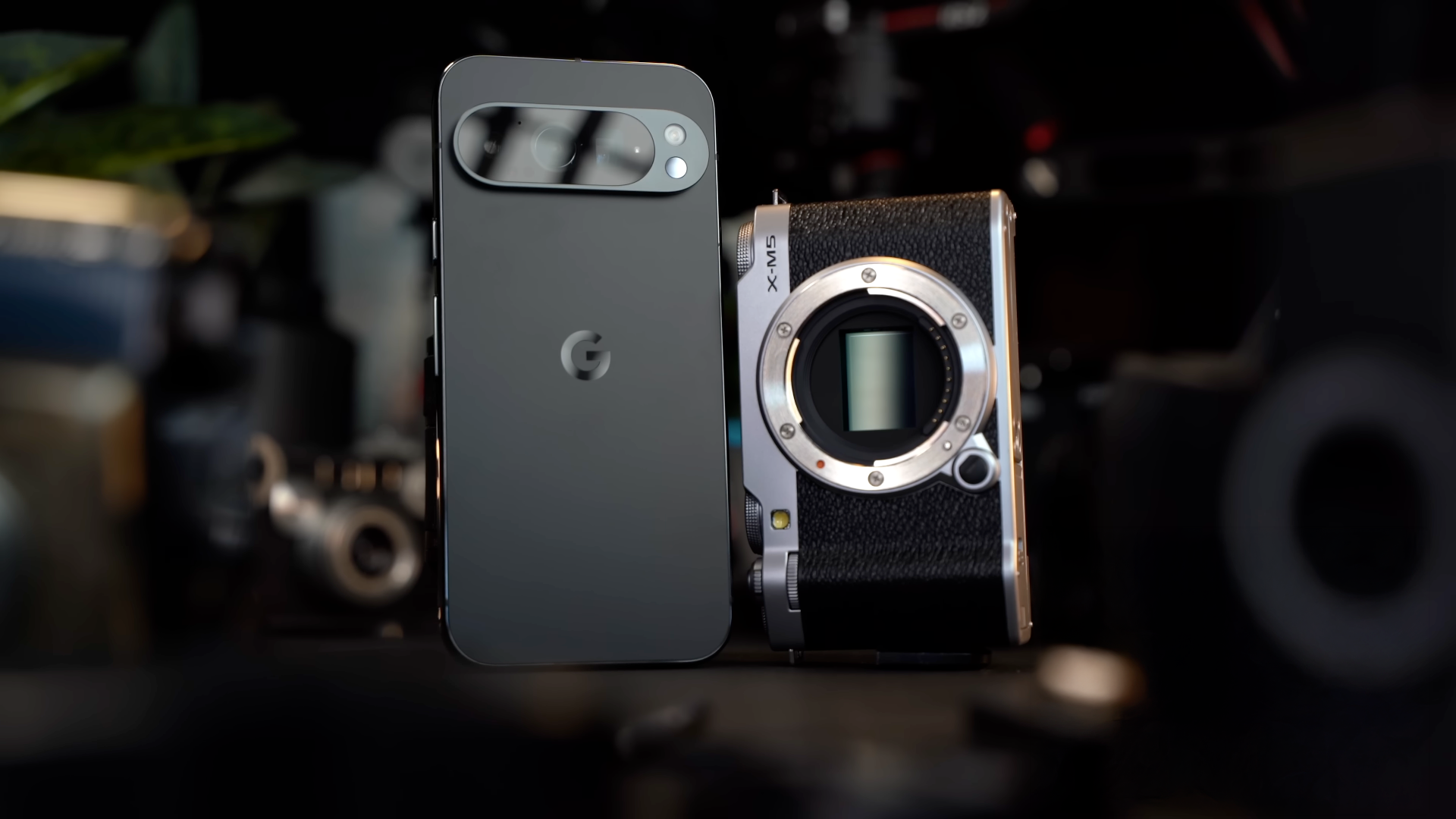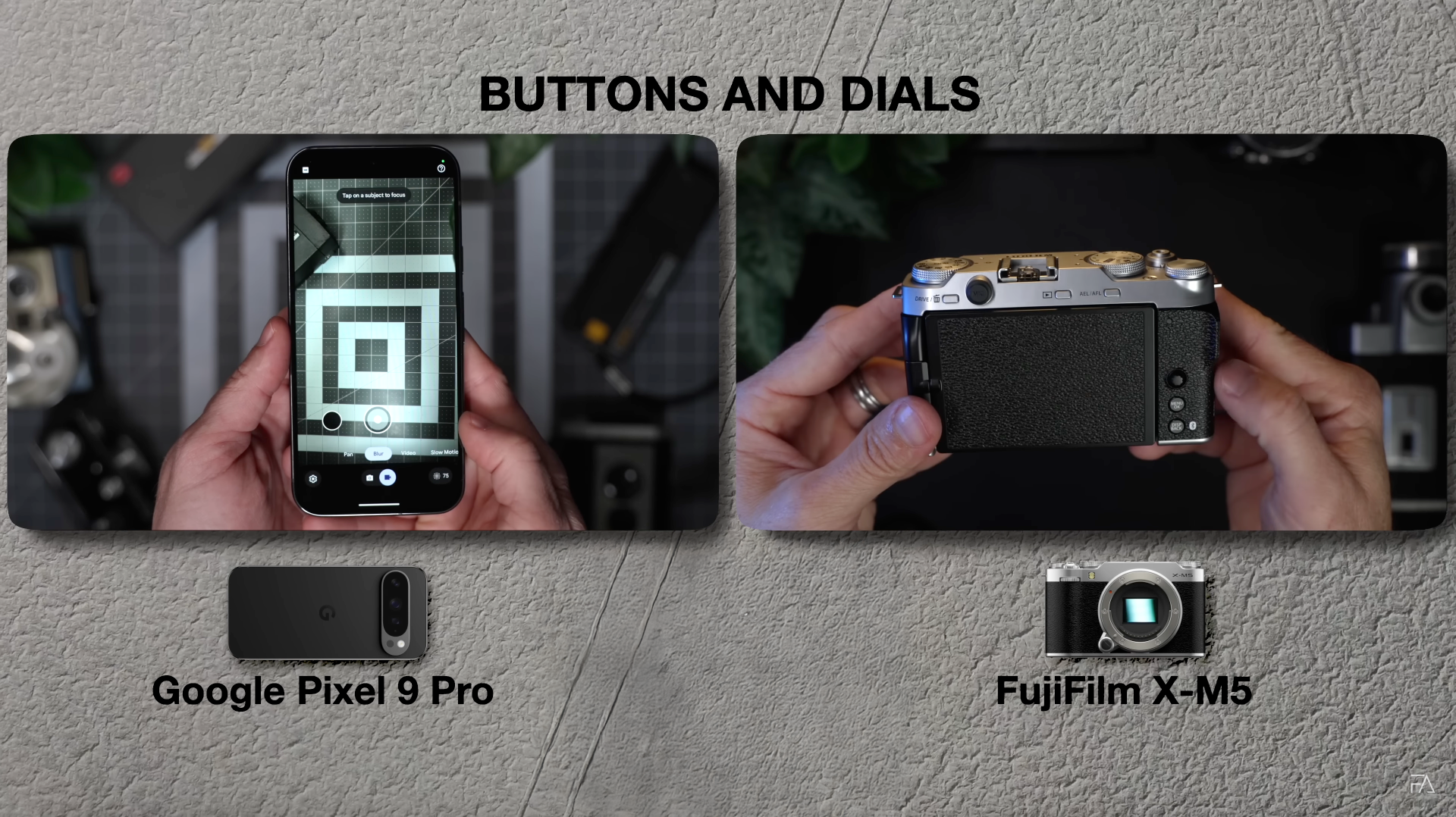Google Pixel 9 Pro vs. Fuji X-M5: My Quest for the Perfect Camera
Feb 08, 2025The Google Pixel 9 Pro and the Fujifilm X-M5 are two cameras with two very different philosophies. The Pixel 9 Pro, the camera I always have with me, promising pro-level imaging in my pocket. The X-M5, the gateway to the Fujifilm world, tempting me with its classic controls and interchangeable lenses. I wanted to know: could the X-M5 convince me, a Pixel 9 Pro user, to make the switch?
You can find the FREE PROJECT FILES for both cameras so you can dive in and explore for yourself. If you're still on the fence after you read this blog, you can take my free "Which Camera Should I Buy?" quiz!
I also made a YOUTUBE VIDEO on this comparison so you can watch it after you read this blog.
First Impressions: A Blind Test for Myself
I set up a blind test, capturing photos and videos with both cameras in a variety of situations. I wanted to see if I could tell the difference. Here's what I found:

In this beach scene, I immediately noticed a difference in the sky. One camera (B) showed a less saturated blue, but the greens were richer, and the water had less glare. Interestingly, I hadn't used a polarizing filter on either camera. This made me wonder about the sensors' sensitivities to polarized light.

The neon lights revealed even more. Camera A had a more saturated look, with a noticeable halo around the lights. Camera B's image was crisper and clearer, with better highlight control. I could see more detail on the pinball machine, which impressed me.

Out in the bright sunlight, with both cameras on program auto and using equivalent focal lengths (Viltrox 13mm on the X-M5), the differences were striking. The sky and grass tones were completely different. Camera A's grass looked washed out, while Camera B's was a richer, more realistic green – much closer to what I was actually seeing.
What Did I Learn?
These initial comparisons gave me a good starting point. But I needed more. So, I've put together over 50 image and video comparisons, covering everything from exposure transitions and low-angle shots to autofocus tests and green screen performance.
(Disclaimer: This post isn't sponsored by Google or Fujifilm.)

Price and Value – What Am I Paying For?
The Pixel 9 Pro starts at $849, and with a case and screen protector, I'm looking at close to $1000. The X-M5 body is $799, but by the time I add a kit lens, SD card, and extra battery, I'm in the same ballpark. Similar prices but very different beasts. The Pixel 9 Pro is a phone with a great camera. The X-M5 is a dedicated camera.
The Pixel 9 Pro boasts a 48MP sensor, 4K video up to 60fps, 8K (AI-enhanced), and a beautiful display. The X-M5 has a 26MP sensor, 4K up to 60fps, 6K open gate at 30fps, F-log, a fully articulating screen, and those gorgeous Fujifilm film simulations. Both are 2024 models, so they have the latest tech. The Pixel 9 Pro also has some seriously cool AI features, like the "Add me" function.
Usability and Design – How Do They Feel?
Right off the bat, the Pixel 9 Pro is easier to use. But I quickly realized that the advanced features are buried in menus. The X-M5 definitely has a learning curve, but once I got the hang of it, I loved having all those dials and buttons at my fingertips.

Grip: The Pixel 9 Pro is slippery. A case is a must. The X-M5's grip isn't much better, especially with bigger lenses. A cage is definitely recommended.
Ports: Pixel 9 Pro has USB-C, speaker, mic, and SIM tray. The X-M5 has micro HDMI, USB-C, headphone, and mic ports.
Battery: The Pixel 9 Pro's battery is non-removable, which is a pain. The X-M5 lets me swap batteries, a huge plus for me.
Displays: The Pixel 9 Pro's screen is gorgeous, but it doesn't articulate. This makes shooting at weird angles a real struggle. The X-M5's fully articulating touchscreen is fantastic.
Settings: The Pixel 9 Pro's manual controls are limited. The X-M5 gives me so much more control.
Frame Rates: Pixel 9 Pro goes up to 4K 60 and 8K 30 (AI-upscaled). The X-M5 does 6K open gate at 30 and 4K 60.
Updates: The Pixel 9 Pro updates wirelessly, easy peasy. The X-M5 requires connecting to my phone or using an SD card.
When it came to features and functionality, I found the Pixel 9 Pro's autofocus to be more reliable, likely due to its fixed aperture. The X-M5 sometimes struggled, even with its touch-tracking feature. In everyday photography, the image quality difference between the two wasn't huge, mostly a matter of different color science. However, the X-M5 really excelled in challenging lighting, preserving highlights and shadows much more effectively. For green screen work, the X-M5 gave me more flexibility in post-production. While the Pixel 9 Pro boasts a dedicated macro mode, I was surprised to find that the X-M5, even without a dedicated macro lens, produced cleaner and less noisy images. Both cameras handled overhead and product shots well, though I did notice the X-M5 was a bit more sensitive to overexposed skin tones. I also compared the audio from both cameras, and you can hear the results for yourself.

Diving deeper into image quality, I made some interesting discoveries. In an A-Cam/B-Cam setup, I felt the X-M5 delivered more realistic skin tones, while the Pixel 9 Pro's looked more saturated. Using a color checker, I could see distinct differences in the greens, reds, oranges, and blacks. The X-M5 surprised me with its sharpness, especially considering it has fewer megapixels than the Pixel.
The X-M5's standard color profile also struck me as more natural, whereas the Pixel 9 Pro's dynamic range, while seemingly wider, felt somewhat artificial. This was further reinforced when I looked at backlit scenes; the X-M5 retained color better, while the Pixel 9 Pro tended to brighten the midtones. Landscapes revealed differences in grass and sky color, which became even more pronounced when I specifically focused on the sky.
I even took a look at how each camera captured the sun, including the color and diffraction spikes. In low light, the X-M5 was the clear winner, producing less noise and a more cinematic feel. Night shots told a different story; the Pixel 9 Pro handled bright lights better, but its white balance leaned towards warm tones. Shooting at 4K 24 and 4K 60 revealed differences in dynamic range and color. I found the exposure transition to be smoother on the Pixel 9 Pro. Both cameras performed admirably when I shot headshots using window light. Finally, the Pixel 9 Pro's image stabilization was significantly better than the X-M5's.

Conclusion – Where Do I Stand?
The Pixel 9 Pro and the Fujifilm X-M5 are both fantastic cameras, but they serve different purposes. The Pixel 9 Pro is my everyday camera, perfect for capturing moments on the fly. The X-M5 offers something else entirely: a more deliberate, creative experience.
The Pixel 9 Pro is convenient, but the X-M5 makes me want to shoot. It slows me down, makes me think about composition and lighting. It's the camera I reach for when I want to create something special.
Choosing the right camera is a personal journey. For me, the X-M5 has a certain magic. But the Pixel 9 Pro is always in my pocket, ready for anything. Ultimately, the best camera is the one you have with you.


